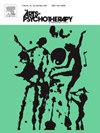对话仿声症:七位音乐治疗师讨论他们与自闭症仿声症的经验
IF 1.5
3区 心理学
Q3 PSYCHOLOGY, CLINICAL
引用次数: 0
摘要
很少有人写音乐治疗师对自闭症回声症的看法,它在治疗中的可能意义,以及它可能的音乐内涵。在这篇文章中,我们描述了七位音乐治疗师的观点,他们与自闭症谱系的客户一起工作,他们经常重复。他们作为模仿的接受者的经历分为四个方面:作为人、作为治疗师、作为音乐家和作为音乐治疗师。参与者被要求描述当他们的客户回应时他们自己的情绪,以及他们对这种回应可能原因的想法。然后,他们被问及回声、韵律和音乐之间可能存在的联系,以及当回声出现时他们的干预措施。访谈采用解释现象学分析(IPA)。分析遵循同样的顺序,主题描绘参与者的情绪;主题侧重于他们对音乐治疗过程中客户共鸣的可能原因的理论阐述;关注回声、韵律和音乐之间联系的主题;以及描述针对客户回应的干预措施的主题。讨论将自闭症模仿视为一种人际现象,它会影响到接受它的人。我们相信,为互动的接收端参与者提供一个舞台来解释他们的观点,可以帮助临床医生更好地理解他们工作背景下的这种现象,并实现克服治疗过程中可能导致的一些困难的步骤。最后,在双重共情理论的指导下,自闭症患者的观点也出现在讨论中。本文章由计算机程序翻译,如有差异,请以英文原文为准。
Conversations on echolalia: Seven music therapists discuss their experience with autistic echolalia
Little has been written on music therapists’ perspective on autistic-echolalia, its possible meanings in therapy, and its possible musical connotations. In this article we describe the viewpoint of seven music therapists who work with clients on the autism spectrum who echo frequently. Their experience of being receivers of echolalia is divided into four perspectives: as persons, as therapists, as musicians, and as music therapists. The participants were asked to describe their own emotions when their clients echo, and their thoughts on possible reasons for the echoing. Then, they were asked about possible connections they saw between echoing, prosody, and music, and about their interventions when echoing occurs. The interviews were subject to Interpretative Phenomenological Analysis (IPA). The analysis followed the same order, with themes that portray the participants’ emotions; themes that focus on their theoretical formulations on possible reasons for clients’ echoing during music therapy; themes that focus on connections between echoing, prosody and music; and themes that describe interventions in response to clients’ echoing. The discussion presents autistic echolalia as an interpersonal phenomenon, which affects the person who receives it. We believe that providing a stage for participants on the receiving end of the interaction dyad to explain their perspective, can help clinicians better understand this phenomenon in the context of their work, and realize steps to overcome some of the difficulties that it may cause within the therapeutic process. Finally, in light of the Double Empathy Theory, the autistic perspective is represented in the discussion as well.
求助全文
通过发布文献求助,成功后即可免费获取论文全文。
去求助
来源期刊

Arts in Psychotherapy
Multiple-
CiteScore
3.20
自引率
11.10%
发文量
66
期刊介绍:
The Arts in Psychotherapy is a dynamic, contemporary journal publishing evidence-based research, expert opinion, theoretical positions, and case material on a wide range of topics intersecting the fields of mental health and creative arts therapies. It is an international peer-reviewed journal publishing 5 issues annually. Papers are welcomed from researchers and practitioners in the fields of art, dance/movement, drama, music, and poetry psychotherapy, as well as expressive and creative arts therapy, neuroscience, psychiatry, education, allied health, and psychology that aim to engage high level theoretical concepts with the rigor of professional practice. The journal welcomes contributions that present new and emergent knowledge about the role of the arts in healthcare, and engage a critical discourse relevant to an international readership that can inform the development of new services and the refinement of existing policies and practices. There is no restriction on research methods and review papers are welcome. From time to time the journal publishes special issues on topics warranting a distinctive focus relevant to the stated goals and scope of the publication.
 求助内容:
求助内容: 应助结果提醒方式:
应助结果提醒方式:


